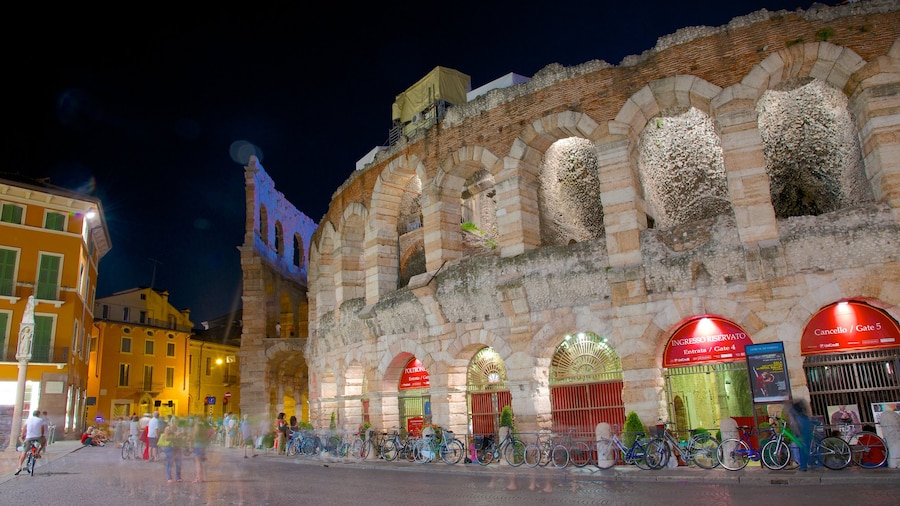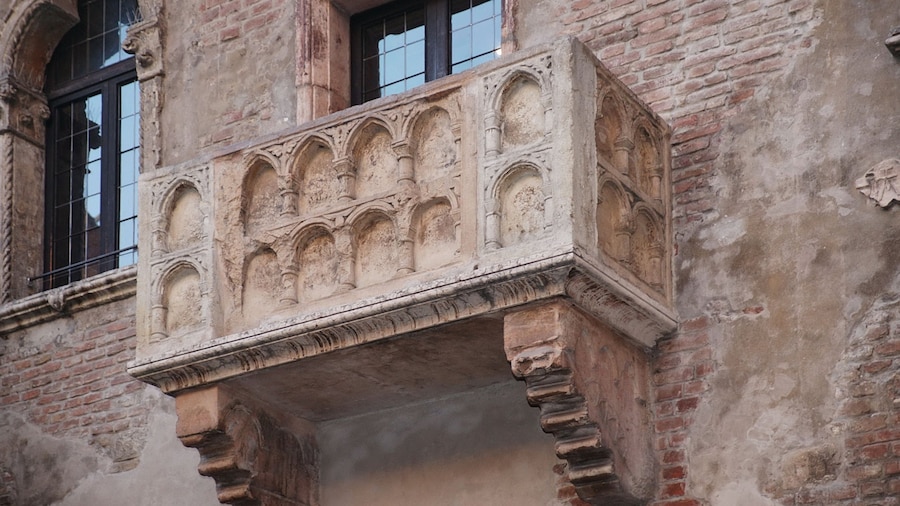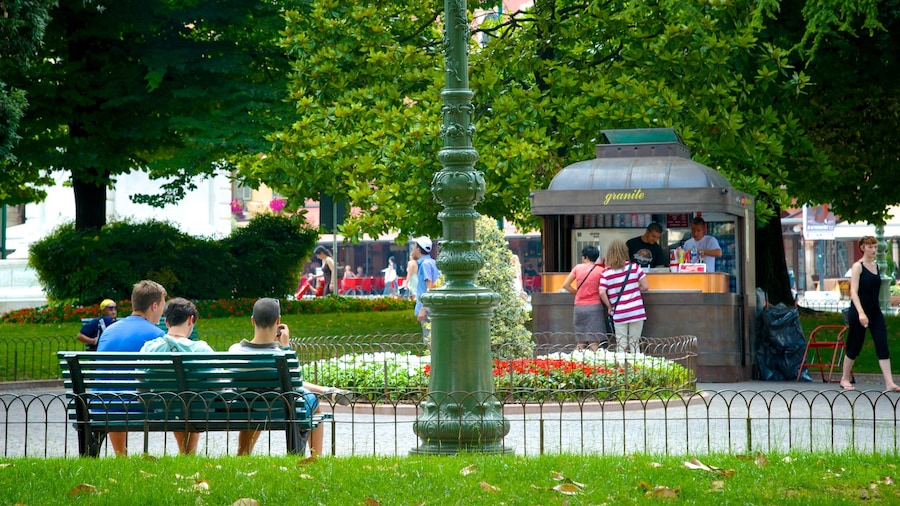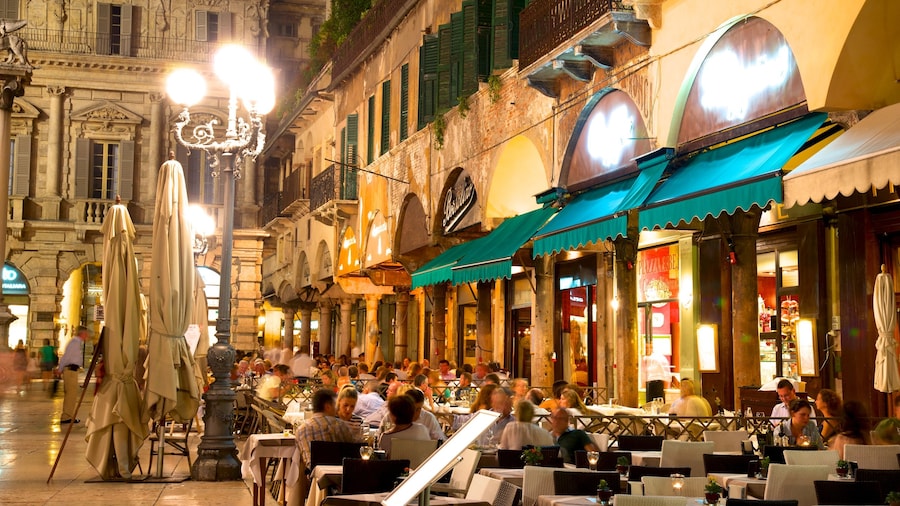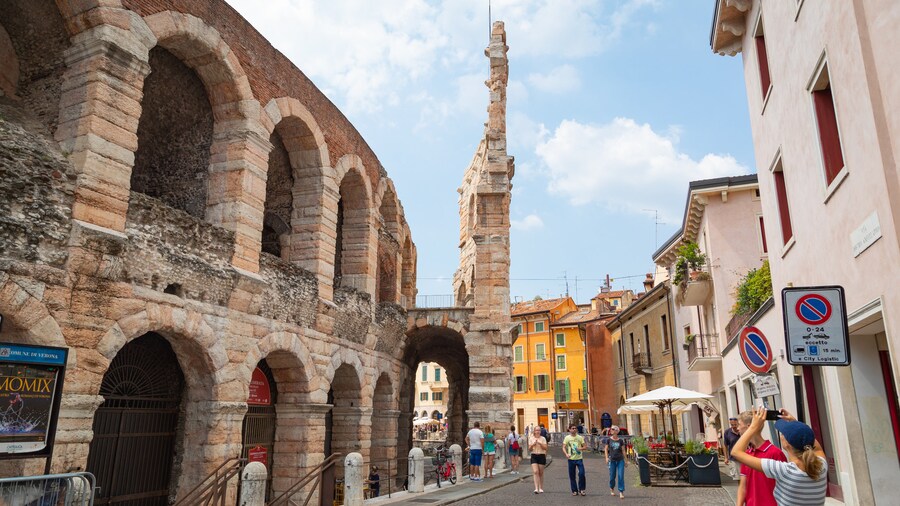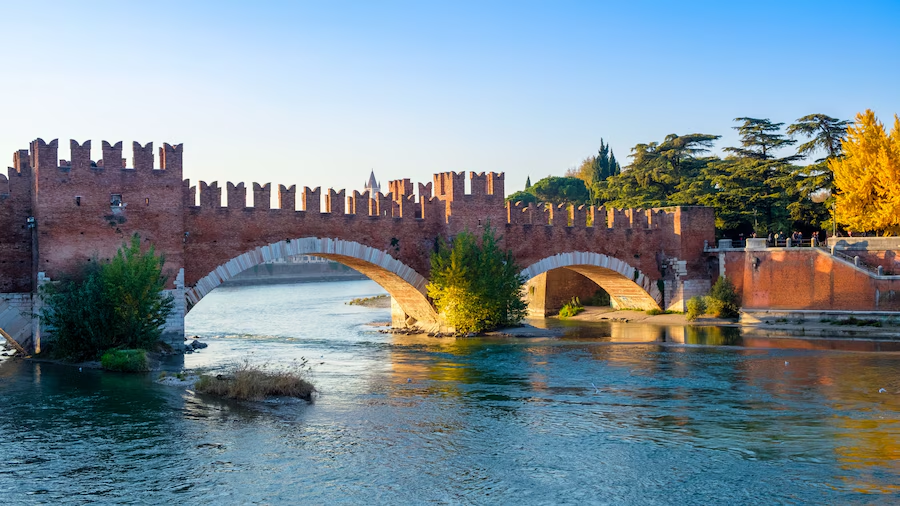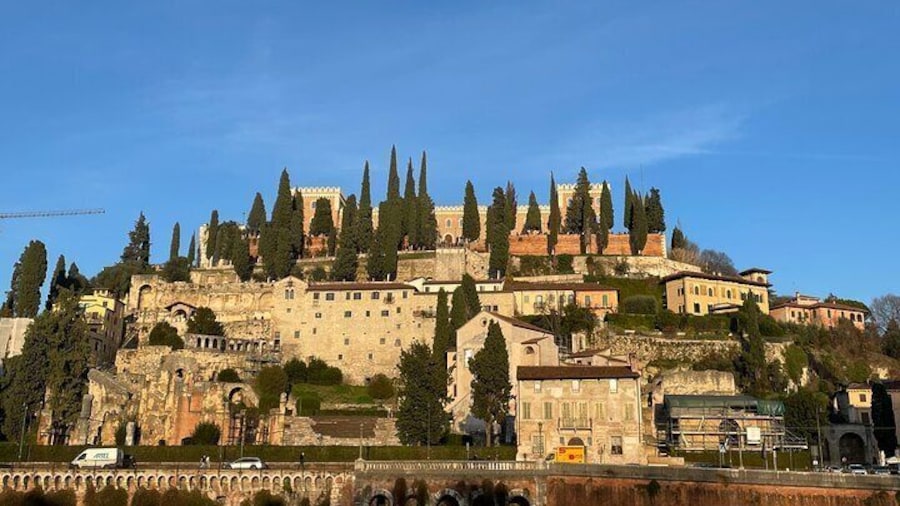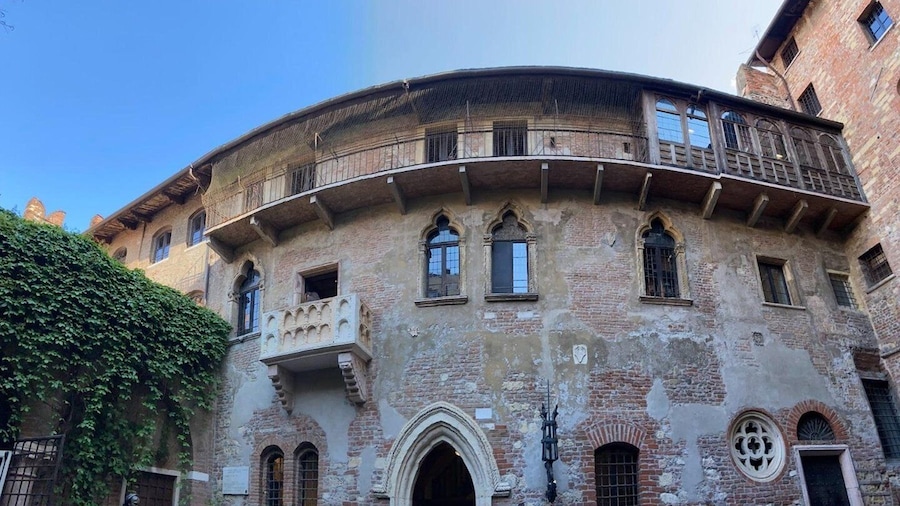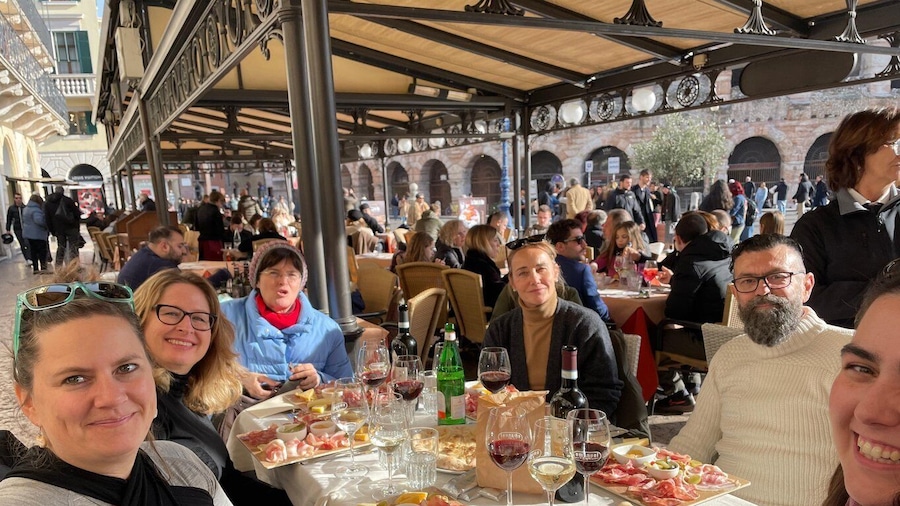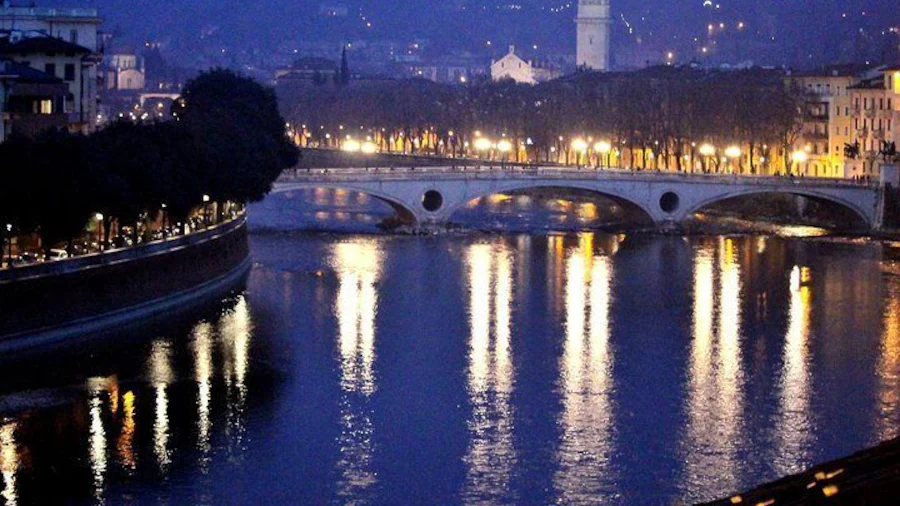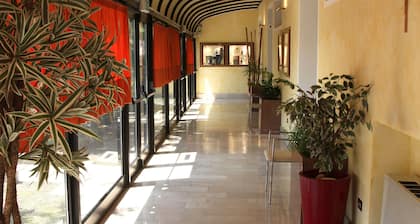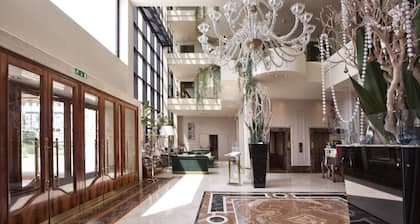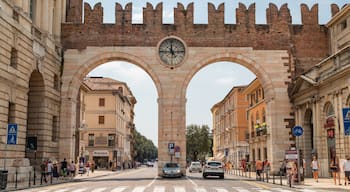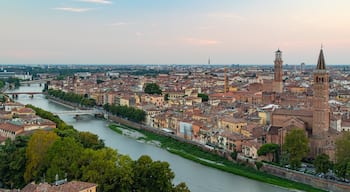Feel the pace of life slow down as you pass through the Porta Vescovo Verona, one of the gateways of Verona’s medieval walls, to Borgo Venezia.. Relax at tree-shaded plazas, sip on coffees at pavement cafés and visit churches. Borgo Venezia is often called the Sei Borghi (Six Villages), a reference to its different districts. From 1518 until the 1900s it was largely uninhabited because of military restrictions that prevented construction beyond the city walls.
Start your visit at Piazza Libero Vinco, in the heart of the neighborhood’s oldest district. It takes its name from Libero Vinco, an Italian soldier. Sit on a bench facing the square’s fountain and inspect the monument dedicated to fallen soldiers. The Church of Joseph Outside the Walls, the first church erected outside of the city walls, looms over the square’s southern side.
Houses with window shutters and flower-filled balconies line the neighborhood’s streets. Poke around boutiques, grab lunch at a pizzeria and purchase snacks to eat on the move at bakeries. Piazza Isotta Nogarola is a good place to have a break and watch locals go about their daily activities. The modern Church of Santa Maria Addolorata frames Piazza don Giuseppe Cavalleri, which was once a soccer field and now features a children’s playground.
Wander north to the residential district of Santa Croce, also known as the Quartiere Musicisti (Musician’s District). Note the street names that honor famous Italian musicians, such as Giuseppe Verdi, and operas, including Rigoletto and Tosca. Relax in Santa Croce Park, a popular spot for picnics in summertime.
Borgo Venezia is just a 20-minute walk from Città Antica, Verona’s historic quarter. Several public bus lines connect with the city center and trains stop at the nearby Porta Vescovo station. Continue your discovery of Verona’s village-like neighborhoods at San Michele Extra. Here you’ll find the striking circular-shaped Church of Madonna di Campagna.





